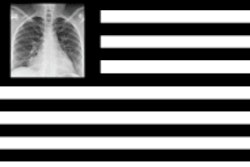Quality improvement projects aren't simply an onerous requirement imposed on residents; they're a great way to improve patient care and clinical workflow while giving residents confidence in their problem-solving abilities, according to an article in the Journal of the American College of Radiology.
By selecting projects judiciously, getting help from faculty, and collaborating with colleagues throughout the hospital, residents can make real progress toward improving the performance of their departments while fulfilling Accreditation Council for Graduate Medical Education (ACGME) requirements, wrote Dr. C. Matthew Hawkins, from the University of Cincinnati, and Paul Nagy, PhD, from John Hopkins University (JACR, February 18, 2013).
"By learning how to lead a quality improvement project team and drive change within a department, a graduating resident with these accomplishments will be perceived as a value innovator who has adopted a broader scope of radiology's role within the entire healthcare enterprise," Hawkins and Nagy wrote. "By learning these skills, residents engaged in quality improvement are also embracing the need to learn value-added skills to avoid commoditization of our specialty."
Agents for change
"Residents can be really great agents for change," Nagy said in an interview with AuntMinnie.com. "They have a lot of opportunities to do quality projects; in some ways, projects that even the faculty can't do."
Nagy is a medical physicist who trains residents at Johns Hopkins.
ACGME's program requirements stipulate that residents must participate in quality improvement projects as part of their training in systems-based practice, specifying that they "systematically analyze practice using quality methods" and implement changes that improve the practice, Hawkins and Nagy wrote. Residents must do at least one project during their term, and they can work together in teams.
But didactic learning isn't enough; trainees must be engaged in quality projects and exercise the fundamentals of quality and performance improvement, the authors wrote.
That's a lot to accomplish during an intensive fast-paced residency, but learning how to do it carries value of its own, they wrote. A principal challenge is frequently changing rotations or even changing hospitals when it takes three to four months to establish continuity in a quality improvement project.
In addition, many staff radiologists are poorly trained in quality improvement methodologies, which limits their ability to act as mentors. And IT and human resources departments, though crucial for success, vary widely in their ability to support projects.
However, studies have shown that such projects can instill "greater personal fulfillment for program graduates," and offer opportunities for interaction with other residents throughout the hospital, according to the authors.
"These residents are also required to perform quality improvement projects during their training and the importance of collaboration between departments cannot be understated," Hawkins and Nagy wrote.
Getting started
What comes first? Residents must have a faculty member for each initiative, and they must design each project with an appropriate scope. Hawkins and Nagy cited several sources of helpful materials, including the following:
- "Online radiology quality resources," by Nagy P and Safdar N (JACR, June 2010, Vol. 7:6, pp. 459-460)
- "A resident journal club for quality improvement," by Itri J, Olmsted W, and Nagy P (JACR, April 2011, Vol. 8:4, pp. 225-227)
- American College of Radiology (ACR) Appropriateness Criteria, December 2012
Appropriateness guidelines
The ACR has guidelines on more than 180 topics to guide clinicians in ordering the correct imaging study based on presenting symptoms or clinical condition, the authors noted, which could be used for resident projects.
"For example, a resident could collaborate with emergency department colleagues to lead the implementation of the appropriateness criteria for patients presenting to the emergency department with suspected pulmonary embolism and chest pain," the team wrote. "By performing a baseline measurement of adherence to the criteria, creating an educational intervention with emergency physician colleagues, and measuring the effect of the educational intervention, a resident could successfully lead a quality initiative that improves adherence to important appropriateness criteria."
Clinical history and checklists
Often adding a particular bit of clinical history can improve diagnosis and management of patients, the authors wrote, citing as an example the importance of smoking history in the evaluation of a lung nodule. Residents should consult with key stakeholders in the department to determine which important and readily available clinical history item might improve image ordering and interpretation.
If the information isn't currently being collected, residents can change procedures to incorporate it during interactions with patients. Then, going forward, they can measure the improvement in availability of the information at imaging, the authors advised.
Creating and measuring the effects of checklists could also be a suitable project. Residents' performance of clinical procedures can be improved by creating checklists of imaging exam goals, the authors noted. Fluoroscopy times can be shortened, for example, by adhering to exam checklists, and junior-level performance of other procedures can be improved as well.
The imaging ambassador
"It is easy to ridicule our clinical colleagues for unnecessary orders and dubious interpretations," the authors wrote. "But how often have we tried to learn about their environment?"
Hawkins and Nagy suggested that senior residents collaborate with trainees in medicine and surgery and serve as "imaging ambassadors" on critical care rounds for two weeks, as a customer satisfaction quality improvement project. Such projects allow clinicians to ask questions about exam appropriateness, and they allow radiologists to serve as imaging consultants, while helping them understand the challenges of imaging ordering in a busy department.
"I do like the concept of imaging ambassador -- it really plays into where we want to put radiology as a value-added role, and there's a better relationship with referring physicians," Nagy said. "Therefore, training residents to be imaging ambassadors provides a lot of benefits, as opposed to just cranking out reports. Any time you create a relationship, you're going to have better communication, and they're probably going to ask you more appropriate questions, and you're going to be able to build a more effective relationship -- it's as simple as that."
By measuring so-called satisfaction data points -- for example, availability for consultation, satisfaction with the radiology department, willingness to seek consultation, and so on -- ambassador programs can greatly improve the satisfaction of referring clinicians within the hospital, the authors wrote. These projects are also a great source of ideas for new quality improvement initiatives.
There are many worthy projects for quality improvement that can help residents meet ACGME guidelines while improving patient care, the authors concluded. The important aspects are to enlist faculty mentors and coaches, make sure the project scope is appropriate, and collaborate with other departments as much as possible.
"I think my favorite project in radiology is establishing an easy way for quality control feedback to go from the radiologist back to the technologist -- to help reinforce a relationship that has been slowly sterilized by our IT systems -- and let the radiologist easily identify an excellent case or a case that could be better to make sure there's clear communication going on between the radiologist and the technologist," Nagy said. "They don't have time for a lot of hallway conversations, so having that type of tool helps you identify areas that you want to improve. So for me the best quality improvement projects are the ones that help me identify a whole slew of areas that we can keep working on together."



















